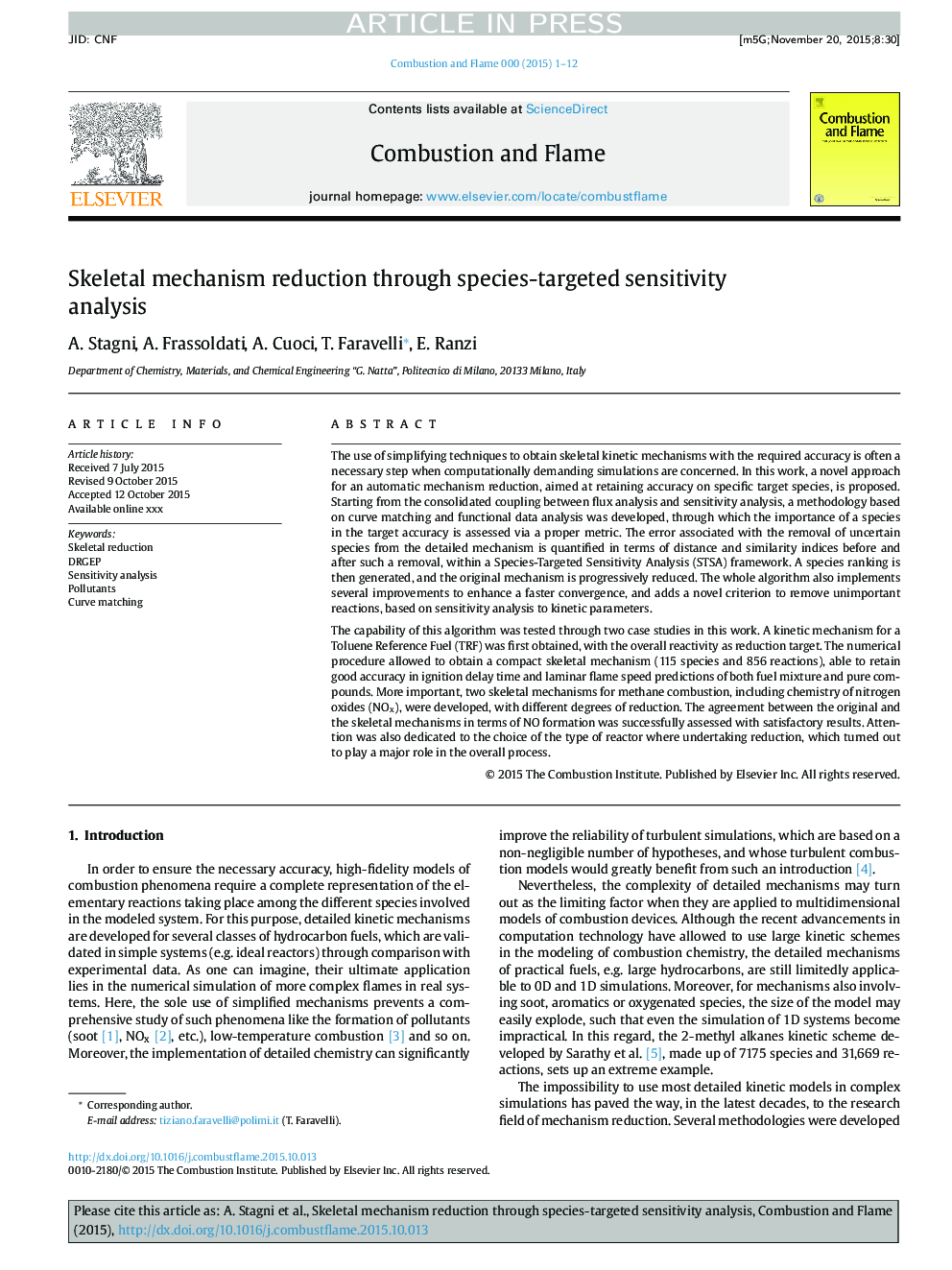| Article ID | Journal | Published Year | Pages | File Type |
|---|---|---|---|---|
| 6594368 | Combustion and Flame | 2016 | 12 Pages |
Abstract
The capability of this algorithm was tested through two case studies in this work. A kinetic mechanism for a Toluene Reference Fuel (TRF) was first obtained, with the overall reactivity as reduction target. The numerical procedure allowed to obtain a compact skeletal mechanism (115 species and 856 reactions), able to retain good accuracy in ignition delay time and laminar flame speed predictions of both fuel mixture and pure compounds. More important, two skeletal mechanisms for methane combustion, including chemistry of nitrogen oxides (NOx), were developed, with different degrees of reduction. The agreement between the original and the skeletal mechanisms in terms of NO formation was successfully assessed with satisfactory results. Attention was also dedicated to the choice of the type of reactor where undertaking reduction, which turned out to play a major role in the overall process.
Related Topics
Physical Sciences and Engineering
Chemical Engineering
Chemical Engineering (General)
Authors
A. Stagni, A. Frassoldati, A. Cuoci, T. Faravelli, E. Ranzi,
